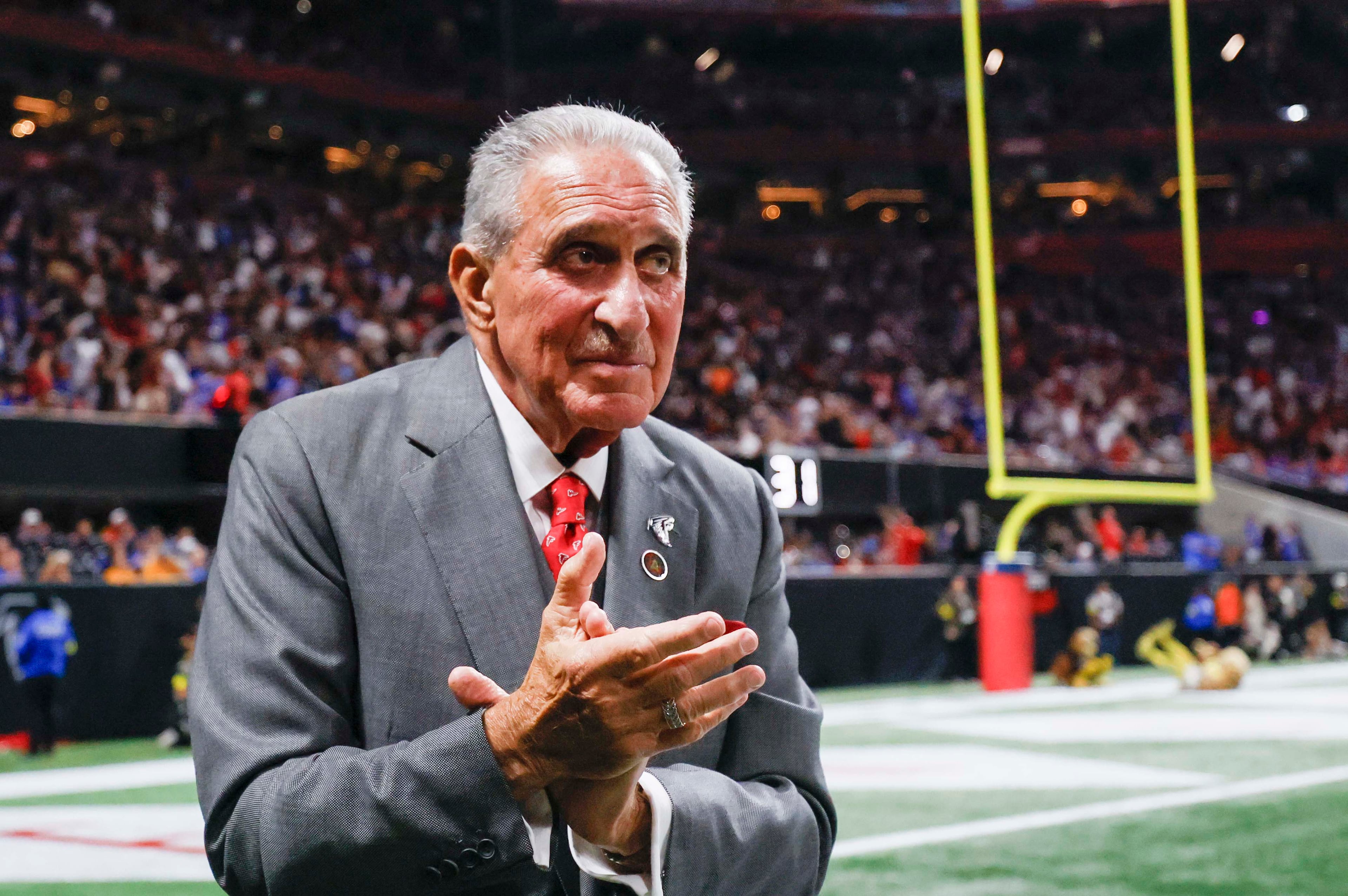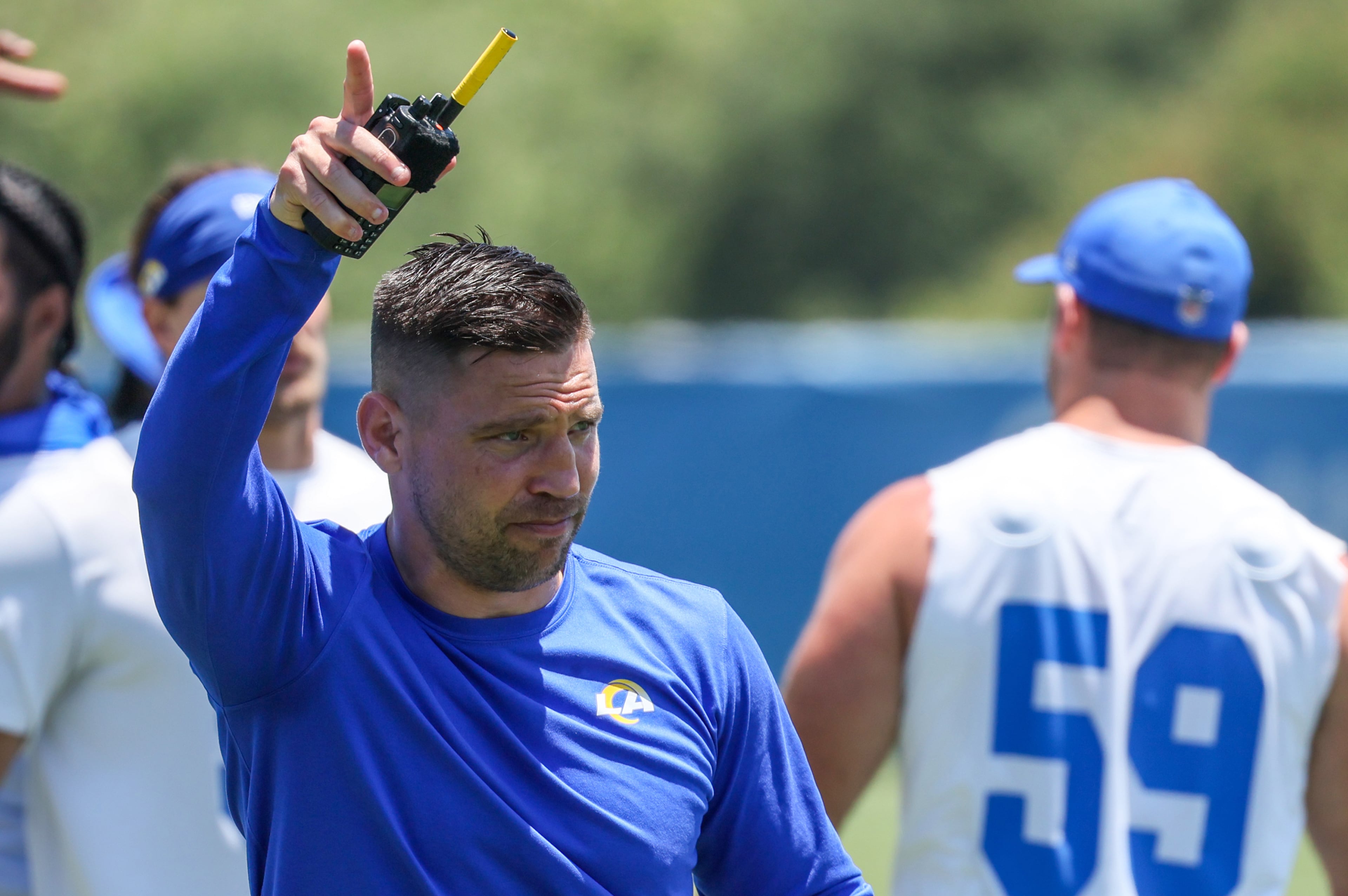Falcons still seeking the model defense

Dan Quinn is talking defense, a subject near and dear. You could not elicit, even if you tried, more passion from Streep on acting or Clapton on the blues.
Someone mentions the term “compression tackling.” And all of sudden the Falcons coach is moving his small audience (a reporter and a Falcons media guy) around like Stratego pieces in order to demonstrate one of his pet techniques.
You stand here, in the middle, he says.
I come in from this (right) side and hit him with this (left) shoulder.
You come in from that (left) side and hit him with that (right) shoulder.
“We try to own our leverage,” he is saying, with evangelistic fervor. “We’re out trying to get as physical a two-man tackle as you can get.”
He is a coach, coaching, all for the benefit of a sportswriter who is likely to tackle nothing more challenging than a misplaced modifier or a second lap around the press box buffet.
Yeah, defense matters greatly to Quinn. In the second year of his Flowery Branch regime, much of the progress — or lack thereof — will be measured on the side of the ball where the head man has lived. That’s where the emphasis was obvious during the Falcons’ draft, a need addressed by three of the team’s top four picks, including the first pick, safety Keanu Neal. And that’s where the Falcons last season made some tentative strides, with considerable room for improvement.
“Most of our numbers were from the middle of the pack in points allowed (19th in the 32-team NFL) and explosive plays allowed (15th in runs of 10-plus yards and passes of 25-plus yards). That’s the new baseline and we jump from here,” Quinn declared. Those are two of the numbers the coach considers important defensive markers, along with turnovers. The defensive was middling in takeaways, tied for 16th with 23. Meanwhile, the offense dragged down takeaway-giveaway ratio with 30 turnovers of its own, fifth worst in the league.
“We just got to get those turnovers, man,” cornerback Desmond Trufant said.
Enough numbers for the time being. Especially when they pale so when compared to Quinn’s ambition.
Considerably better in all those categories was the team destined to be held aloft as the model for the Falcons so long as Quinn occupies the big office at Flowery Branch — Seattle. That’s where Quinn polished his reputation to its highest shine, overseeing one of the league’s best units and some of its most dynamic performers before moving considerably south and east.
As a concept, the Seattle-fication of the Falcons is an agreeable one. Would you rather they try to be the knock-off Cleveland?
And in practice, their aim is quite clear, as they import defenders whose skill set conforms to the quicker, more versatile Seattle template.
So, when the Falcons took Neal, the knee-jerk reaction was: OK, they are seeking their version of Kam Chancellor, the four-time Pro Bowl safety acclaimed for big hits and big plays.
“Ah, I’m me. I’m myself. I’m going to focus on being the best me,” said Neal, whose minor knee surgery following the second exhibition game was projected to cost him at least three to four weeks.
And then, when they took linebacker Deion Jones in Round 2, a player who created buzz at the NFL Combine with his speed, there came the refrain: “OK, there’s the Falcons Bobby Wagner.” That’s the Seahawks top-shelf inside linebacker (himself a second-rounder in 2012).
To take the equations a few steps further, how about these:
Trufant = Seattle cornerback Richard Sherman.
Or, free agent defensive end Derrick Shelby = Seattle defensive end Michael Bennett.
The equal sign, of course, is an overstatement at this point, a mere device employed to illustrate the Falcons; ideal. The math of team-building is hardly so simple.
Equal? Not close yet. But if Quinn can help construct a reasonable facsimile, the Falcons might transform a glaring weakness into a passable strength.
It certainly was no coincidence that shortly after being drafted by the Falcons, Neal traveled to Virginia to work out for a week with Chancellor.
Nor is it a bad thing that Trufant — a Washington native whose brother played for the Seahawks — strengthened his bond with Sherman during their time together at last season’s Pro Bowl.
It doesn’t require a professional pollster to sense a trend here.
Speaking earlier in camp, before the knee complained, Neal spoke on how Chancellor “had reached out to me and asked me if I wanted to work with him — I couldn’t turn that down.”
“He’s big on helping his brothers out,” Neal said. “Reaching out to me meant a lot to me. … We did a lot of technique drills. Obviously we worked and grinded but I hung out with him, got to know him as a person, too.”
Needless to say, the coach was grateful. “It’s the brotherhood that happens in the NFL,” Quinn said. “The peer-to-peer talk can be more valuable than player-to-coach talk. This guy (Chancellor) did it on the field, doing the exact thing we’re asking (Neal) to do.”
At 25, in his fourth year with the Falcons, Trufant comes off as something of an old hand on this evolving defense. There was no need for any indoctrination when Quinn came onboard since Truffant already was a true believer in the Seahawk way.
When older brother Marcus, also a cornerback, landed with the Seahawks in 2003, Desmond was a regular first-hand witness to what they were building there. By the time Richard Sherman came along, eight years later, Trufant was midway into a college career and starting to take notice. In the habit of studying other defensive backs like a Realtor does comps, Trufant especially admired Sherman because “the mental part of the game is what separates him — how he sees the game, how he knows when things are coming.”
“I think I got a little bit of that, too,” he said.
Putting design into action is the great challenge. One that this season will depend upon some significant contributions from players who are just getting their beaks wet in the NFL. Speaking for the young players, Neal said, “I think we can do a really good job contributing immediately.”
There is no such thing as copyright infringement in the NFL, no plagiarism. One borrows freely. And by heaven, when Dan Quinn talks about playing fast and physical — and that would be daily — it is with the vision of doing it here like his team used to do it there, in the great northwest.
OK, a couple of more numbers.
The Seahawks have allowed the fewest points per game in the NFL the past two seasons. They had 46 sacks a year ago, compared to the Falcons’ 19. (The sack total “is not a winning stat to me,” Quinn said — but it certainly would be nice if the Falcons approximated a pass rush sometime in the near future).
If they are not to that level yet, Quinn is hopeful. When is he ever not?
“We’re able to play faster as a group now because we know (the defense) better,” the coach said. “We’re able to play mentally faster and we’re hopeful we added some speed defensively to play faster both at safety and at linebacker.”
Trufant is more the optimist. Even a little grandiose, some might say.
Playing Seattle-like defense is the goal, he’ll say, and then take the leap from there:
“They’ve obviously been one of the best defenses, they are always at the top. We are trying to get into that realm. It’s a new year. Anybody can take the No. 1 spot.”



